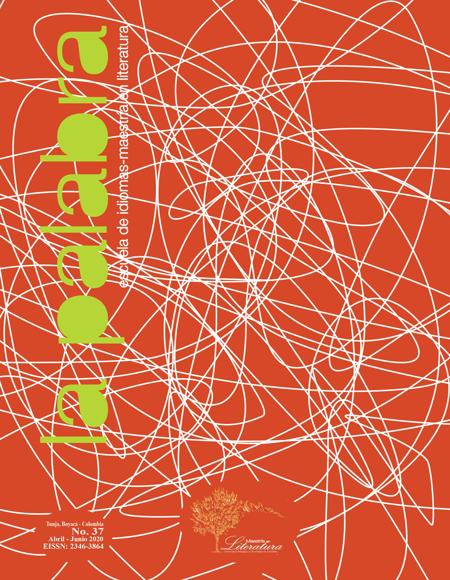An Attached Element and The Reception Theory. An Analysis of the Short Story “La siesta del martes” by Gabriel García Márquez

Abstract
This article analyzes the conversion of two poetics: The Reception Theory, according to Hans Roberts Jauss and the Attached Element, enunciated by Mario Vargas Llosa. In this analysis, the central question revolves around the relation that could exist between these two theories and the correspondence of the additions from the author and the de-codification from the attached element in order to have a successful reception. Therefore, this article studies the short story of La siesta del martes [1962] de Gabriel García Márquez (1927-2014) to find the links and understand overall the literary value and the universe of creation of the author which guarantee the reception of his work and his further perdurability.
Keywords
Critic, Attached Element, Style, Gabriel García Márquez, Perdurability, Reception Theory, Universe of Creation
References
Arguedas, J. (1996). El zorro de arriba y el zorro de abajo. (2a ed.). E. M. Fell (ed.). Madrid: ALLCA XX.
Bermúdez, V. (2004). Dinámicas de la interpretación poética: emoción y estética cognitiva en la lectura literaria.
Revista Signa, (28), 139-171. Recuperado de https://dialnet.unirioja.es/servlet/articulo?codigo=6975665
Echeverry, J. A. (2004). Cartas a Clotilde. Revista Colombiana de Educación, (47), 78-103. Doi: https://doi.org/10.17227/01203916.5521
Gadamer, H. G. (2003) Verdad y método I. Salamanca: Ediciones Sígueme.
García Márquez, G. (1980). La siesta del martes. En Los funerales de la Mamá Grande (pp. 7-17). Barcelona: Bruguera.
García Márquez, G. (2002). Vivir para contarla. Bogotá: Editorial Norma.
Harss, L. (1966). Los nuestros. Buenos Aires: Sudamericana.
Jauss, Hans Robert. (1971). La historia literaria como desafío a la ciencia literaria. En H. U. Gumbrecht et al, La actual ciencia literaria alemana: seis estudios sobre el texto y su ambiente (pp. 37-114). Salamanca: Anaya.
Posada Agudelo, I. (2014). García Márquez: poeta de la imaginación. Escritos, 22(49), 431-455. Recuperado de https://revistas.upb.edu.co/index.php/escritos/article/view/2756
Rama, Á. (1998). La ciudad letrada. Montevideo: Arca.
Valenzuela, J. (2018). La ficción y la libertad. Una aproximación a la dimensión política de la poética vargasllosiana sobre la ficción. Anales de Literatura Hispanoamericana, (47), 237-259. Doi: https://doi.org/10.5209/ALHI.62738
Vargas Llosa, M. (1971). García Márquez historia de un deicidio. Barcelona: Barral Editores.
Vargas Llosa, M. (1975). La orgía perpetua Flaubert y "Madame Bovary". Barcelona: Seix Barral, 1975.
Vargas Llosa, M. (2007). Cien años de soledad. Realidad total, novela total. Cuadernos hispanoamericanos (681), 9-34.
Vega Cantor, R. (2004). Las luchas agrarias en Colombia en la década de 1920. Cuadernos de Desarrollo Rural, 1(52), 9-47. https://revistas.javeriana.edu.co/index.php/desarrolloRural/article/view/1264
Zapata, J. C. (2007). Gabo nació en Caracas no en Aracataca. Caracas: Editorial Alfa.